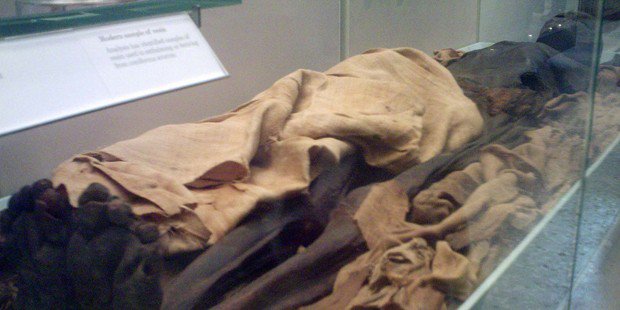 Two 3,400 year-old mummies of an ancient Egyptian architect and his spouse have undergone an unusual process of mummification but still in a very good state of preservation, researchers at the UK’s University of York told Plos One Journal.
Two 3,400 year-old mummies of an ancient Egyptian architect and his spouse have undergone an unusual process of mummification but still in a very good state of preservation, researchers at the UK’s University of York told Plos One Journal.
“The internal viscera including stomach, intestines, lungs, and liver were not removed from the body and placed in canopic jars as usual. This procedure was a common practice for royal 18th Dynasty mummies,” Joann Fletcher Frank Rühli, Stephen Buckley wrote on Plos One journal Saturday.
Mummification was based on the dehydration of the dead body for which ancient Egyptians used to remove all the inner organs that might produce humidity or moisture.
The two mummies, belonged to Kha and Merit; an 18th (1580B.C.-1080B.C) Dynasty architect and his spouse, were found in an intact tomb near the Valley of the Workers cemetery west of Luxor. The tomb was excavated in 1906 by the Italian Egyptologist Ernesto Schiaparelli.
Kha, who died in his fifties, was the architect of the 18th Dynasty Pharaoh Amenhotep II (1424B.C.–1398 B.C.)
The two mummies along with their funerary items found inside the tomb are currently on display at the Egyptian Museum in Turin, Italy.
“The four canopic jars were not found inside the tomb;” according to Plos One, this means the couple “underwent a short and shoddy funerary procedure, despite their relative wealth at death.”
Canopic jars were used by the Ancient Egyptians during the mummification process to preserve the inner organs so that they are used in the afterlife, archaeologist Sheif al-Sabban told The Cairo Post Saturday. They were usually made of Alabaster or limestone with lids representing heads of the four sons of Horus, as guardians of the organs, he added.
“All internal organs including brain, ocular bulbs/ocular nerves, thoracic and abdominal organs – showed a very good state of preservation,” according to Plos One.
According to ancient Egyptian mythology, a well-preserved body was important so that the person’s soul could recognize their body when they were resurrected, Sabban said.
The process of mummification is based on two stages: the embalming of the body and the wrapping and burial of the body, he added.



